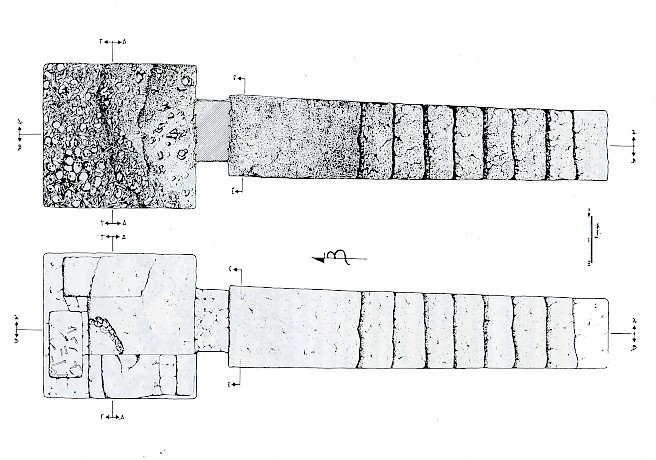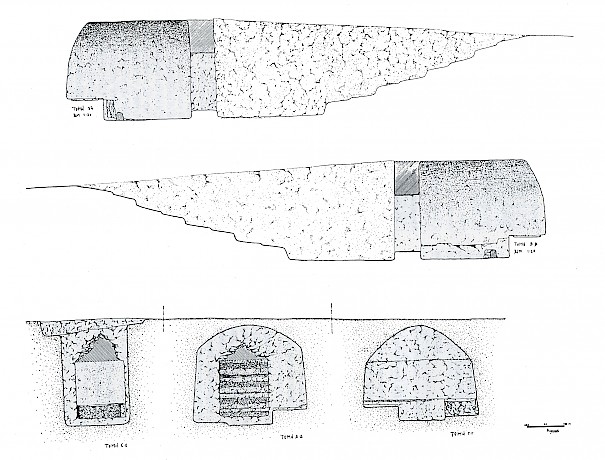
 Λαξευτός μονοθάλαμος καμαροσκεπής τάφος. Κάτοψη.
Λαξευτός μονοθάλαμος καμαροσκεπής τάφος. Κάτοψη.
 Λαξευτός μονοθάλαμος καμαροσκεπής τάφος. Τομές.
Λαξευτός μονοθάλαμος καμαροσκεπής τάφος. Τομές.
Carved chamber grave
The vaulted chamber tomb at Derveni, Thessalonki
At the 8th km. of the National Highway at Derveni, an underground funerary monument with two uses was found by chance in 1986 during work to widen the Thessaloniki-Kavala highway.
The monument was a single-chamber, rock-cut tomb measuring 3.30 x 3.10m. with a vaulted ceiling and entrance accessed by an inclined road (dromos). The lower part of the entrance was blocked by schist blocks, with an intervening fill of debris about 1 meter in height, and closed by carefully-finished rubblework.
Inside the burial chamber there were three couches arranged in a Π-shape. The tomb was found looted, with its first use dated to the 3rd-2nd century B.C. as shown by the remains of its grave gifts, that is, two heads from female figurines, two miniature skypoi, a black-glaze oenochoe and two unguentaria (perfume bottles). After its looting, the tomb remained open, resulting in its gradual backfilling.
The discovery of the tomb’s second use was of exceptional interest, and is particularly significant due to its possible correlation with an episode in the history of Thessaloniki. At some point there were thrown into the tomb through a tunnel in its ceiling corpses without any accompanying funerary gifts—at least 70 have been counted—with discernible traces of abuse from sharp instruments on the bones of the body and skulls, which would argue that they had previously been despoiled. According to archaeometric research, this military episode probably dates to the 6th-7th century, a period when Thessaloniki experienced repeated invasions by raiders (Arabs, Slavs), though this subject requires further investigation.
The excavation evidence allows no doubt that the vaulted tomb was used as a makeshift burial place, a polyandrion (mass grave) following a violent military encounter in the greater Derveni area. The prevailing assumption is that the corpses were those of enemies, which is supported by the absence of a decent funeral, the large number of bodies, and the despoliation of the corpses.
Thomi Savvopoulou Archaeologist 14-6-2016